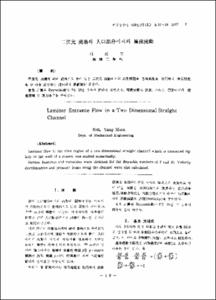소비에트제도의 정착과정에 관한 연구
- Alternative Title
- A Study on the Establishment of the Soviet System in the USSR
- Abstract
- 소비에트제도는 러시아 혁명과정에서 자연발생적으로 나타났던 제도였는데, 1936년 헌법의 채택을 계기로 소련의 중심적 국가기구로 정착되었다. 그 특징은 다수 인민이 입법과 행정과정에 직접 참여하는 이른바 직접민주제의 한 구현제도라는 점이었다.
선거제도, 유권자의 지시, 소환제도 등도 직접민주제의 요소들이었다. 스탈린이 주도한 1936년 헌법채택과정에서 치 요소들은 그대로 도입되었으며 선거제도는 오히려 그전보다 더욱 민주화되었다. 그러나 초기에는 없었던 헌법원리들이 첨가됨으로써 이 계도는 비민주적으로 운영되고 말았다. 민주적 중앙집권주의, 사회주의적 적법성, 공산당의 지도적 역할 등의 원리가 그것이다. 이 원리들은 민주성과 중앙집권성의 양 측면을 모두 갖고 있었는데 실제 운영에는 후자가 압도적으로 우세하였던 것이다.
소비에트제도는 이처럼 양면성을 가진 원리들의 지원을 받았고 중앙집권적으로 운영됨으로써 이후 독재의 기구로 변하고 말았던 것이다
The soviet system emerged spontaneously in the course of the Russian Revolution, and became a key governmental organization of the USSR when the 1936 Constitution was adopted.
It is supposed to be the realization of the so-called direct democracy where the majority of the people participated in the legislative and administrative process.
Other elements of direct democracy included electoral system, voters' mandate and recall system, which were introduced in the 1936 Constitution of which Stalin directed the adoption process. The electoral system became more democratic than before, but the soviet system was administered undemocratically because other new constitutional principles were added to the Constitution - democratic centralism, socialist legality and the leading role of the CPSU, for instance. These principles had both democratic and centralistic elements, but in reality, the latter overwhelmed the former.
The soviet system thus became a tool of dictatorship when it was supplemented by these principles that had contradicting elements in themselves and was administered centralistically.
The soviet system emerged spontaneously in the course of the Russian Revolution, and became a key governmental organization of the USSR when the 1936 Constitution was adopted.
It is supposed to be the realization of the so-called direct democracy where the majority of the people participated in the legislative and administrative process.
Other elements of direct democracy included electoral system, voters' mandate and recall system, which were introduced in the 1936 Constitution of which Stalin directed the adoption process. The electoral system became more democratic than before, but the soviet system was administered undemocratically because other new constitutional principles were added to the Constitution - democratic centralism, socialist legality and the leading role of the CPSU, for instance. These principles had both democratic and centralistic elements, but in reality, the latter overwhelmed the former.
The soviet system thus became a tool of dictatorship when it was supplemented by these principles that had contradicting elements in themselves and was administered centralistically.
- Issued Date
- 1995
- Type
- Research Laboratory
- Alternative Author(s)
- Do, Hoe-Kun
- Publisher
- 사회과학논집
- Language
- kor
- Rights
- 울산대학교 저작물은 저작권에 의해 보호받습니다.
- Citation Volume
- 5
- Citation Number
- 2
- Citation Start Page
- 201
- Citation End Page
- 215
- Appears in Collections:
- Research Laboratory > Journal of social science
- 파일 목록
-
-
Download
 000002024614.pdf
기타 데이터 / 326.89 kB / Adobe PDF
000002024614.pdf
기타 데이터 / 326.89 kB / Adobe PDF
-
Items in Repository are protected by copyright, with all rights reserved, unless otherwise indicated.